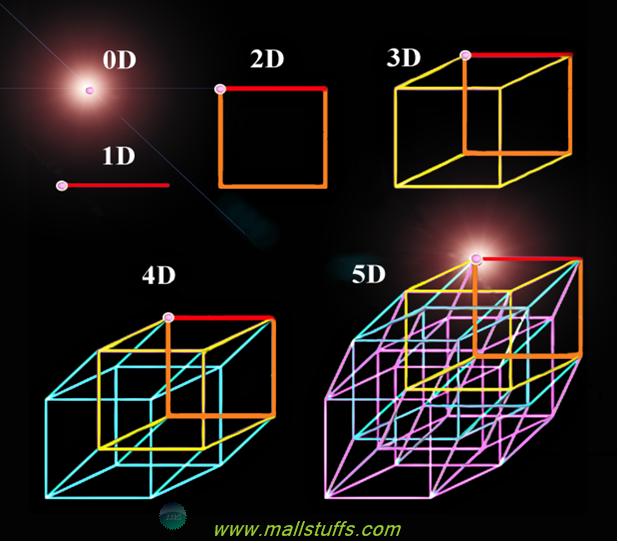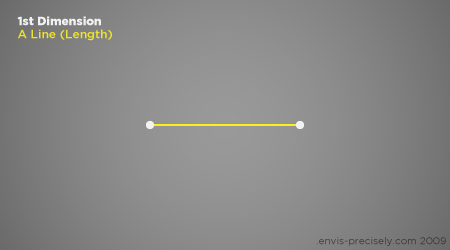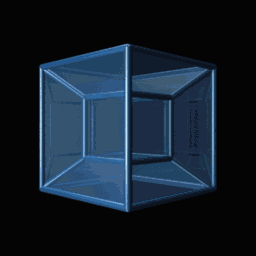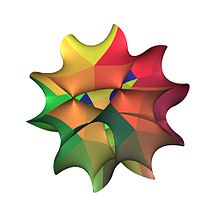Before existence took place, there was pre-existence without time and without space, where no dimensions at all exist. Science can tell us nothing of this era. We are left to our own experiences to decipher our personal realities about from whence we came.
There is a point before time and space. Within that point is the property of physical awareness. That which is aware–call it the thinker, the cosmic dreamer, or if you prefer, the pre-universe–it is surely the precursor of information, as thought and ideas were all held in one timeless, yet geometric, point. The mental universe of pre-existence was one of potential. Potential does not possess a physical entity. Potentials are mental images.
This is a wonderful illustration. If you look at it, "A" is present whether or not "B" is present. "A" then, is potential energy that does exist without material content and without motion. The creation of motion is brought about by the existence of "B". "A" can exist without time and space because or its property of being potential. In order for this potentiality of energy to be released, it must have a precise co-ordinate in space and a sense of awareness to duration in order to experience time. This data is provided by "B". In other words, "B" is the informational content that co-creates the physical.
We know that physical awareness exists in the universe because we are ourselves aware. It is one of the properties of human existence. It is also one of the properties of the universe. We can easily see these properties in life, but find it harder to conclude that there is an awareness in inanimate objects as well. Objects are made from an atomic structure and physical awareness exists in that structure as well. Wherever events occur, physical awareness records the change in the objects and codifies the information so the senses can perceive it.
Physical awareness is a fundamental property in the formation of the universe.
Before we can have a universe, we need objects and events. An event is an interaction between objects. To have an interaction we need a field of awareness to identify an object or an event. Without awareness, there is no event. Awareness is the left hand that interprets the information on the right hand. The essential quality for observation or interaction is having an awareness of an object. Objects have some physical content, but they consist primarily of information. This information is physically coded and eventually it is recognized by our senses. Physical awareness is the first cause for the existence of time and space. All things are objects that are formed by the eternal, non-material awareness which has always been present.
Awareness comes first, then movement and the information it produces occurs. For aeons, this awareness may have held nothing at all because there was nothing of which to be aware. It does not matter, as this is but a taste of timelessness. Each of us experiences the truth of this first hand. We come from a place that has no memories, no experience and no existence until we are conceived, grow aware and begin to form our identity. What we are before we are born is a field of awareness that has not come into identifiable form. Because awareness existed before we did, we were able to recognize, learn, and eventually become that which we are now. If our awareness did not exist before our birth, our birth would never have happened. Our personal awareness began to be built in our mother's womb according to coded instructions that preceded your birth. Our personal awareness is the chalkboard on which we write our experience. So it is with all interactions and observations in nature and beyond. It takes awareness for anything to have physicality. That is why there are two states of existence, the invisible mental state and the visible physical state. They are separate aspects of the same reality.
The primal point is the first dimension of universal formation. At first, this point was infinitely small, but it swelled to become the universe we know today. Space spread out in every direction becoming a container and an incubator for the physical universe. Pure potential energy was released as kinetic radiation. The hot radiation traveled in waves that experienced duration. As they interfered with one another, they began to mingle and react. As the energy expanded, it cooled in temperature. At a certain point, energy cools enough to precipitate into matter. Space is filled with physical condensate upon cooling. Primal particles are born incredibly hot and cooled as they moved––radiating through space and leaving a physical imprint upon the space it touched. Radiation changed forms as energy was expended and added. Some of this radiation became massive when combined with other radiation. Eventually, particles condensed from the cooling radiation to form clouds of hydrogen atoms and electrons. In time, the stars and the physical universe are born from the potential of the information that was encoded in the one-dimensional point.











